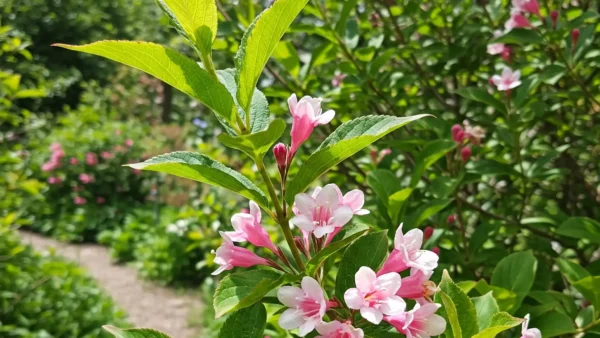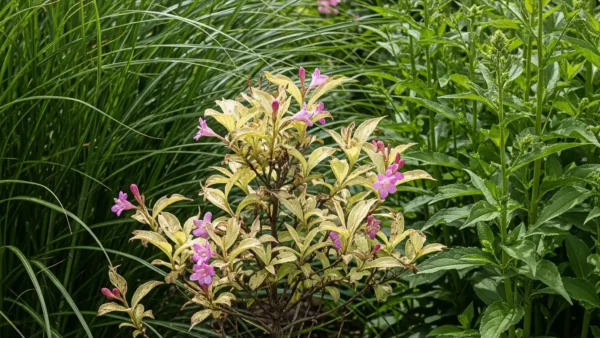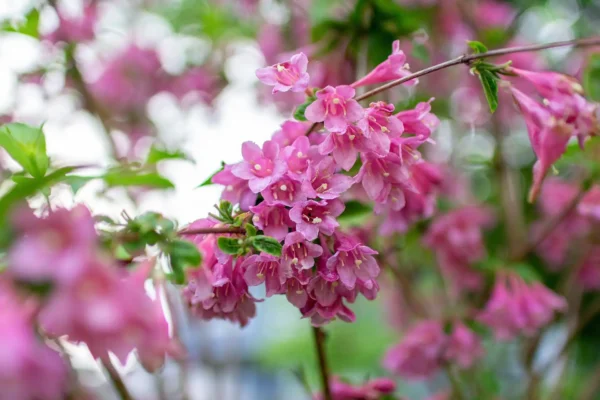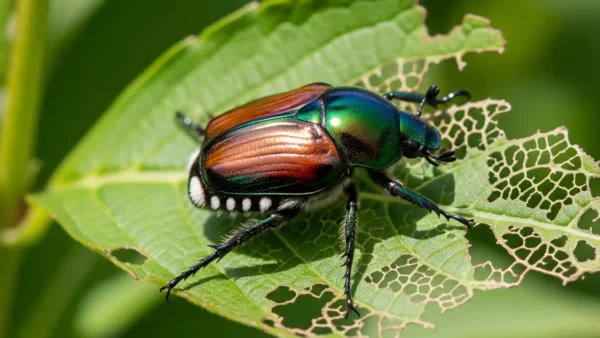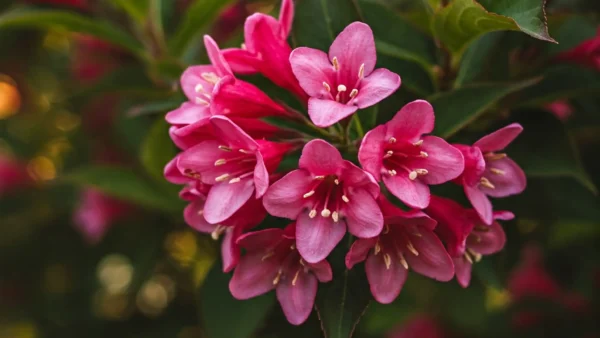Your Weigela Lost Its Vigor? The 3-Step Plan to Bring It Back to Life
When did you originally sow your Weigela? The burst of pink, red, or white trumpet-shaped blossoms covering every limb, the rich, vivid foliage, and the amazing hummingbirds darting from bloom to bloom. For years, it was probably a star actor in your garden—the kind of dependable plant you could always bank on for an amazing spring display.
Now, perhaps years later, the program is not quite what it used to be. The blooms are few, the general form is lanky and overgrown with long, gangly canes, and when you look inside the core appears woody, twisted, and bare. Looking at an elderly, worn-out shrub, one can easily believe its best days are behind it. This is a typical event in the life of a garden; one that frequently causes gardeners to sigh and grab for a shovel, believing the only way to solve it is to rip it out and start over.
But I have some quite amazing news before you do that. One of the most fulfilling and interesting jobs in all of gardening is learning how to revitalize an aged shrub. The straightforward solution to your dilemma is to efficiently reset the clock on your Weigela by means of a planned, severe pruning approach and a fresh emphasis on its essential demands. Encouragement of a flush of vigorous new growth from the base will help to restore not only the lovely blossoms you recall but also a graceful, healthy form.
This book will walk you through exactly why older shrubs start to fade, how to make sure it’s just age and not a more major issue, and offer a clear, detailed, exact, step-by-step plan for that vital trimming. We will also address the necessary after-care to ensure your Weigela returns to its previous splendor. Now let’s begin this rescue operation.
Why Good Shrubs Go Bad: The Life Cycle of a Weigela
First of all, let me clear one point: your elderly Weigela is most likely not your fault if it is struggling. You haven’t obviously done anything wrong. Like all living entities, flowering shrubs have a natural life cycle; so, knowledge of this process is essential to know how to intervene successfully.
The Issue with Old Wood
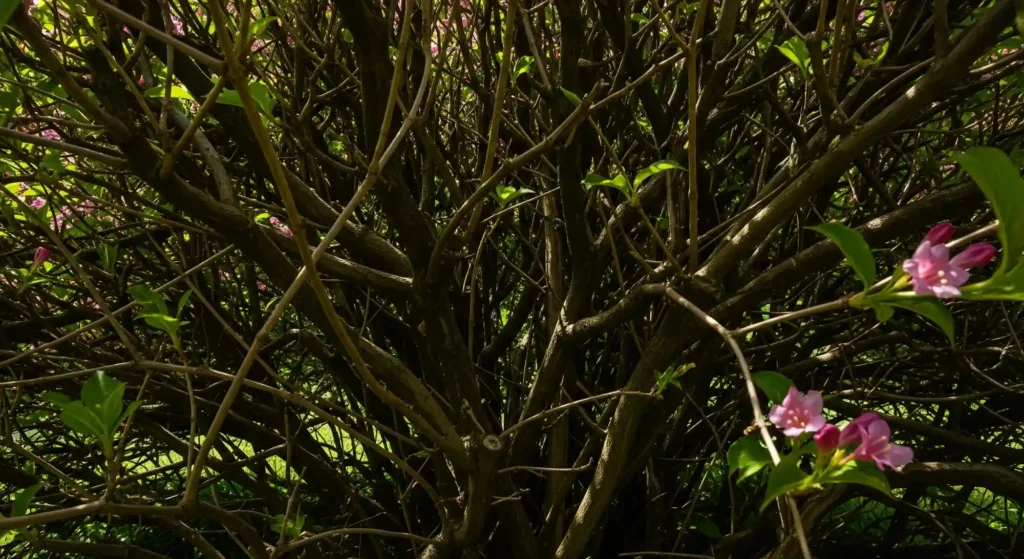
On younger, more strong stems, flowering shrubs such as Weigela produce their most many and vivid blossoms. The oldest canes, those thick, woody stems in the middle of the bush, grow less and less useful over many years. Consider them as kind of semi-retired. Less leaves and, most critically, much less flowers are produced by them. Growing bigger, these ancient canes also start to obstruct vital sunlight and airflow from getting to the heart of the plant. With all the leaves and blossoms gathered at the very ends of long, naked branches, an elder shrub frequently begins to seem hollow or even dead in the middle.
Energy Misdirection
A plant only has a limited capacity for distribution of energy. The plant keeps its valuable energy in just preserving this aged wood as these useless canes take front stage on the bush. It’s devoting funds on components with very low return on investment. Less energy is therefore available to generate what you truly want: fresh, vivid, flower-bearing stems from the base of the plant. The final look is classic “leggy”—long, woody canes with just a tuft of growth at the very tips and an obvious absence of flowers generally.
The Goal of Rejuvenation
Our intention with this approach is not only to make the plant smaller or more orderly. We will be removing this old, worn-out, unproductive wood to reroute the plant’s stored energy in its root system, so acting strategically “reset.” “Stop wasting your energy on these old branches, and use it to produce a brand new generation of healthy, vigorous stems from the ground up,” we advise the plant.
Is It Just Age? A Quick Health Check
Playing plant detective for a moment is smart before you grab your loppers. Although aging generally causes a decrease in vitality, it can also be a sign of an underlying condition. For a plant, a hard prune is a stressful event; so, doing it on an already sick shrub would not be able to preserve it. Wander quickly about your Weigela in search of these indicators:
- Pest Signs: Examine closely the undersides and stems of leaves. Are little, soft-bodied aphids or clusters of waxy bumps—scale insects visible? A severe insect infestation can saps a plant’s energy and produce a decline reminiscent of old age.
- Disease Signs: Look for sunken, discolored sections (cankers) or extensive, fuzzy powdery mildew on the canes. While some areas are typical, a strong illness presence has to be treated.
- Environmental Stress: Has there been a major drought in your neighborhood? Is the shrub positioned in a low-lying area where water collects and might rot roots?
If you discover a significant insect or disease problem, you should start with addressing that one. You can go forward with confidence if the plant seems generally healthy except from being ancient and woodsy.
The Rejuvenation Plan: Renewal Pruning for an Overgrown Weigela
Here you, the gardener, start to be a strategist and a sculptor. Your shrub will look absolutely different with a sharp set of loppers and a small bravery. The secret is understanding when and with which approach to act.
When to Prune: Timing is Critical
Regarding a hard rejuvenation pruning, timing is quite important. While the shrub is still totally dormant and before any new leaf buds start to expand, late winter or early spring is the perfect time to undertake this chore. Usually in my garden, this falls in late February or March. Pruning during dormancy helps the plant to direct all of its strong spring energy surge into developing healthy new growth instead of squandering it on leaves you are about to cut off.
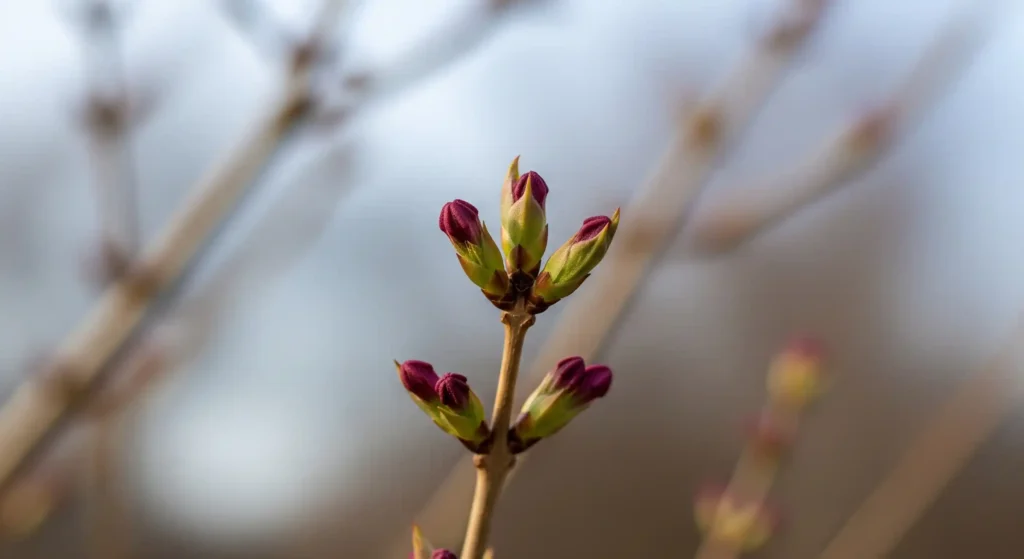
Recall that Weigela blooms on wood cultivated the year before. Pruning during the dormant season is a calculated decision: you are purposefully forfeiting some or all of the possible spring blossoms in favor of the long-term health, form, and future vitality of the entire shrub. This is a temporary loss for a very long-term benefit.
Tools of the Trade
You require not much, but the correct tools will simplify and tidy the work. For the thick, ancient canes, you will want a robust pair of loppers; for any smaller, cleaning cuts, you will want a decent set of hand pruners. Make sure your tools are clean and sharp most crucial. While a dull blade can crush the stem, a sharp one makes a precise cut that heals fast. Should you detect any disease, clean your tool blades with a towel soaked in rubbing alcohol or a 10% bleach solution before you begin and between cuts. This helps you avoid inadvertently disseminating germs. Of course, for your own safety always use strong gloves and eye protection.
The Two Proven Methods
Your approach will depend on the degree of overgrowth in your shrub and your level of patient.
- Method 1: The Gradual Renewal Pruning (The Three-Year Plan) For bushes still in good form but becoming lanky, this is the least startling and most advised approach. It revitalizes the plant over time without ever creating a massive hole in your garden. In the first year, closely examine the shrub and note the thickest, oldest, woodiest canes. Choose one-third or so of these vintage canes. Following them all the way down, cut cleanly as near to the ground as you can—ideally one to two inches from the dirt. For year one, that is exactly. The two-thirds of the plant that remain will bloom normally. Proceed the same way the next year, eliminating still another third of the surviving old canes. By the end of the third year, you will have methodically eliminated all of the old, worn-out wood and will be left with a shrub made just of fresh, productive stems of different ages.
- Method 2: The Drastic Rejuvenation Pruning (The “Hard Reset”) This approach is for shrubs that seem virtually dead in the middle, have very few blossoms, or are greatly overgrown. Though the outcomes can be rather remarkable, this is a bold, dramatic action requiring a leap of faith. How should one approach this? Breathe deeply. Cut all of the shrub stems back to roughly 4 to 10 inches from the ground using a sharp pair of loppers or a pruning saw for the thickest stems. Indeed, all around the plant. You will have a little, depressed-looking stub left. Although you might second-guess yourself and it will look harsh and cruel, this “hard reset” will cause a big flush of active new development from the plant’s healthy root system. If not all, most of the blossoms will probably be sacrificed for the first year; then, in year two you will be rewarded with a compact, nicely shaped, healthy plant covered in flowers.

Following the Cut: Providing Essential After-Care
For your plant, harsh trimming is like serious surgery. It now requires the correct environment for recovery, healing, and the display of that lovely fresh growth you are hoping for. Since it fuels the plant’s rebound, this stage is equally vital as the pruning itself.
Feed the Roots
Your Weigela will be ready to wake up and harness the energy kept in its roots just after you complete pruning. Provide the necessary nutrients to enable its rehabilitation, therefore offering a helpful hand. Use a slow-release, balanced fertilizer designed for blooming shrubs. Around the base of the plant, sprinkle the granular fertilizer on the ground, working out to the dripline—the edge of its outermost branches before you cut. Apply the rates on the package, then carefully ruck the package into the ground.
Lay Down a Layer of Compost
For any plant, but particularly one in recovery, this is among the best things you can do. Lay a 1- to 2-inch layer of premium compost top-dress the ground around the shrub’s base. Compost is a soil conditioner as much as a fertilizer. It will keep feeding the soil with a great variety of nutrients, strengthen its structure, promote good microbial activity, and assist it to retain moisture.
Mulch and Water
At last, round the base of the plant with a 2- to 3-inch layer of organic mulch, such as shredded bark or wood chips. This will help to control weeds, maintain constant soil temperature, and save valuable moisture. Leave a tiny “donut” of space just around the crown of the plant to provide good air circulation; avoid piling the mulch straight against the just cut stems. After you’re finished, deeply and thoroughly water the plant to distribute the compost and settle the fertilizer and guarantee a well-hydrated root zone. Particularly during any dry spells, be sure the plant is routinely hydrated throughout its first season of recuperation.
What to Expect… New Growth
The toughest challenge for every gardener is now patience. Following such a severe trimming, you will be eager to find indications of life.
Patience is a Virtue
If your shrub seems to be a depressed bundle of sticks for a few weeks following pruning, don’t panic. This is quite reasonable! Underground in the roots, the magic is occurring as the plant gets ready for its major push.
The Timeline
- Early to Mid-Spring: As the temperature rises, you should start to notice tender, typically reddish new shoots growing from the base of the plant and from the nodes on the short stumps you left behind. Right now is the triumphant moment!
- Late Spring to Early Summer: Usually reaching several feet in height in their first season, these young shoots will grow with startling energy. Following the slow, 3-year strategy will still provide a good flower display from the surviving elder canes. Although you should not expect a great show this year, if you did the hard reset you may find a few random blooms on the new development.
The Payoff
The actual payback will show up in the next year. Your Weigela should have considerably better floral display on the stems grown the year before and have a much-improved, fuller form.
The First-Year Follow-Up Prune
A light follow-up prune in the first summer will help to promote an even more full, busher form. You might wish to pinch or cut back the tips of some of the active new shoots once they have grown around a foot length. This will stimulate the stems to branch out, producing a denser, more rounded shrub.
Ultimately, Your Weigela’s New Lease on Life
From spotting the aged, unproductive shrub’s issue to boldly cutting those key lines, you now have a whole plan for returning your cherished Weigela to its natural beauty. Though the outcomes are rather satisfying, this procedure requires a little bit of knowledge, a little bit of bravery, and a little bit of patience.
A great ability for every gardener is knowing how to revitalize an old shrub. It shows that you can offer a brand-new beginning to old plants rather than always replacing them with a little knowledge of their life cycle and sharp pair of pruners. You actively participate in the life of your garden, not only tenders to it.
Be courageous with your pruning, be careful with your after-care, and get ready to fall in love with your ‘new’ Weigela all over once more next spring.
Frequently Asked Questions
Does this kind of rigorous trimming destroy my Weigela?
This is the most intense worry; it’s a reasonable question! Rejuvenation pruning is quite unlikely to destroy a Weigela that was otherwise healthy (but old and overgrown). These hardy, tenacious shrubs have great will to survive and store their vitality in their roots. The plant will send up fresh growth as long as the root system is healthy. The risk is greater only if the plant is already quite stressed by disease, root rot from inadequate drainage, or severe drought.
I passed over the late winter window. Is it too late to act now?
Your Weigela’s leafing out for the spring has missed the perfect moment for a hard rejuvenation trimming. Since the plant has already expended energy creating those leaves, drastically cutting them back now would cause great stress. Wait until the next late winter or early spring to make the significant trims. Though postpone the drastic regeneration for the dormant season, you may still take a light “shaping” prune just after it finishes flowering to clean it up.
My Weigela had few blossoms the first year but grew rapidly. Was there anything I did wrong?
Not quite! Particularly if you used the “Hard Reset” technique, this is quite natural and expected. Weigela blooms on “old wood,” hence the springtime flower buds developed on the stems of previous year. You eliminated the flower buds as well since you cut off all those stalks. This year’s intense fresh development is directed at producing new stems. Those fresh stems will then grow flower buds, mature over the summer and fall, and provide an amazing floral show following year. One will be rewarded with patience.
Could this rejuvenation pruning help other overgrown shrubs as well?
Indeed, it works wonderfully for many other shrubs grown from cane that sometimes get lanky with age. Species including Forsythia, Lilac, Spirea, Dogwood shrubs, and Mock Orange will find great success with this approach. The secret is that all of them are plants that raise several stems from the ground. On shrubs with a single, main trunk or a more tree-like form, however, you should not employ this approach since cutting them to the ground may destroy them.


